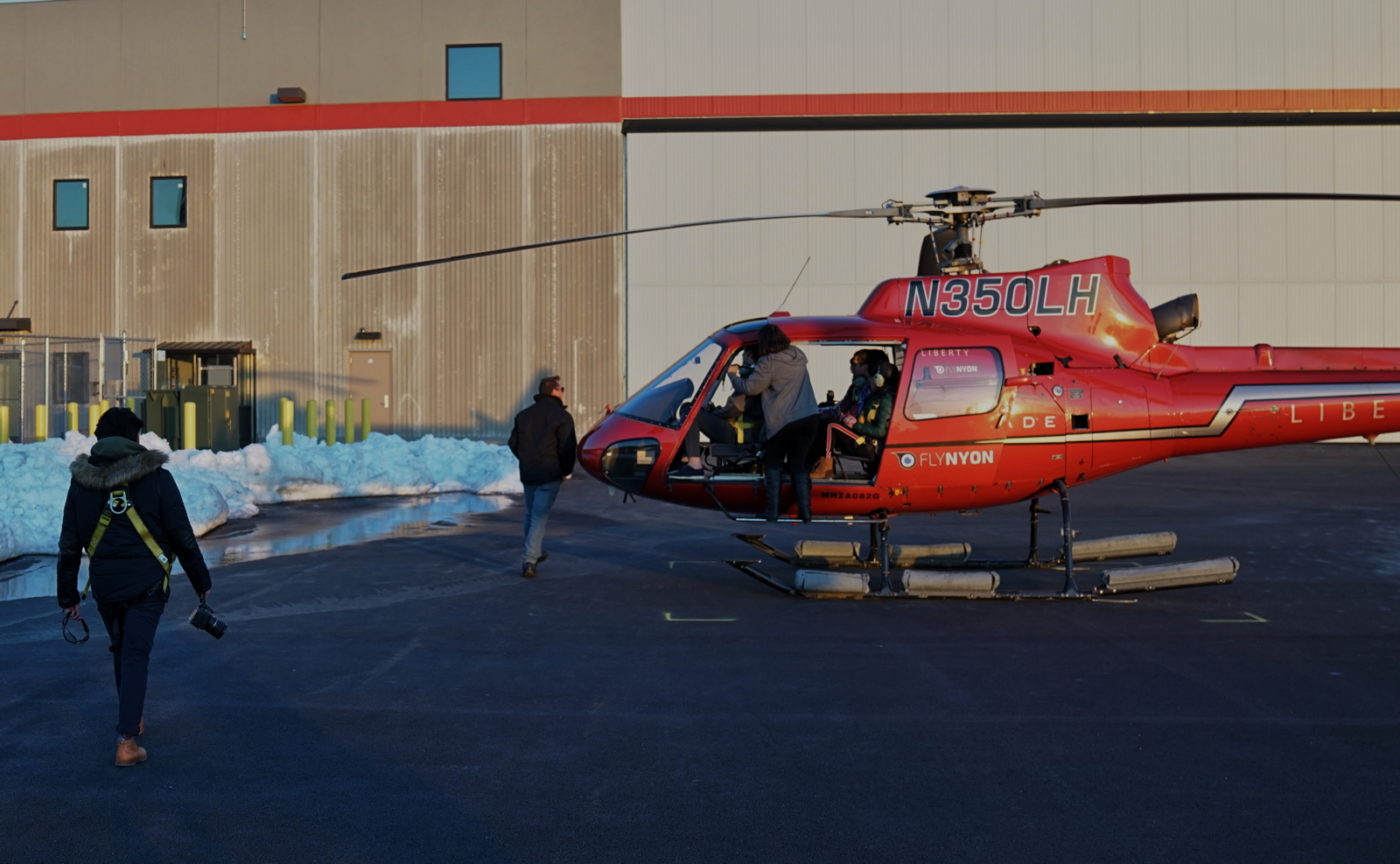The National Transportation Safety Board Monday called on the Federal Aviation Administration to prohibit commercial flights that use passenger harness systems that do not allow for easy release during emergencies.

The urgent recommendation stems from the ongoing NTSB investigation of a fatal accident in New York City involving an Airbus Helicopters AS350 B2 helicopter. The helicopter impacted the East River during an autorotation maneuver after the pilot reported a loss of engine power. The helicopter subsequently rolled inverted. The pilot, who was not wearing a harness, only manufacturer-installed lap and shoulder belts, escaped from the helicopter with minor injuries. Five passengers who wore the harnesses in addition to the safety belts remained inside the helicopter and drowned.
“While we applaud the FAA’s intention to move forward on banning these types of doors-off flights, the FAA has not outlined how or when they plan to take action,” said NTSB Chairman Robert L. Sumwalt. “And definitive action needs to be taken.”
The doors-off aerial photography flight was scheduled for 30 minutes and was operated by Liberty Helicopters under the provisions of Title 14 Code of Federal Regulations Part 91.
The additional harness system consisted of a nylon fall-protection harness tethered via a lanyard to the helicopter. The harnesses allowed passengers to move securely within the helicopter, including sitting in the door sill, while airborne. The harness system was not installed by the helicopter manufacturer; it was comprised of off-the-shelf components that were provided to the passengers by FlyNYON, the company that sold the experience to the passengers. Under normal circumstances at the conclusion of each flight, FlyNYON personnel would release a locking carabiner located on the back of the passengers’ harnesses.
Despite being given a briefing on how to remove these additional harnesses using a provided cutting tool, none of the passengers were able to escape after the helicopter rolled over into the water. The pilot’s manufacturer-installed restraint system was required to comply with 14 CFR section 27.785(c), which states that “Each occupant’s seat must have a combined safety belt and shoulder harness with a single point release.” The harness system provided to the passengers on the accident flight was not evaluated by the FAA.
The NTSB has a long-standing concern with safe egress for passengers aboard helicopters. As a result of a helicopter accident that occurred in 2008, the NTSB found that three of the surviving passengers’ unfamiliarity with the type of buckles on the restraints in the helicopter significantly hindered their ability to release their restraints when they attempted to evacuate the cabin under emergency conditions. In the 2008 accident, passengers received a briefing that described how to operate the rotary restraint, but the surviving passengers said they became confused with its release when the accident occurred.










i am a french aerial photographer
i have done many aerial pictures above ny city
i get always with me a little knife to cut the harness
Don’t forget that what caused this accident per the pilot, was a tether or other gear getting caught on one of the fuel control levers. Quick release would have no different outcome for that. Since, at this point, the NTSB is apparently not willing to say this is what caused the engine failure, they have left it out of their notice. I think their job is so important that even if something else is determined to be the root cause, it would have had merit to mention it as something to look out for in addition to the words about quick releases. People might well have perished even with quick releases but the helicopter might not have ever entered the water if the lever wasn’t yanked. I’ve seen some pretty weird things happen to quick releases to skydivers who knew their gear but were unable to jettison a malfunctioned main canopy due to pulling on what they thought was their handle, or mis-rigging their 3 ring release. I would defy an inexperienced person to swiftly perform this while panicked and banged around. Just ban the doors opened flights for the general public. Perhaps HAI could issue photographer certification after training for the pros, the way the US Parachute Association does for professional level jumpers who perform demo jumps.
I agree the root cause has been left on the back burner i lost a good friend due to the same thing happening. I will not fly an astar that does not have a collective guard commonly used for heliskiing when the double seat is installed. This should be mandatory or make the manufacturer put the throttle on the collective as a twist grip!!! Much more user friendly for training and emergencies.